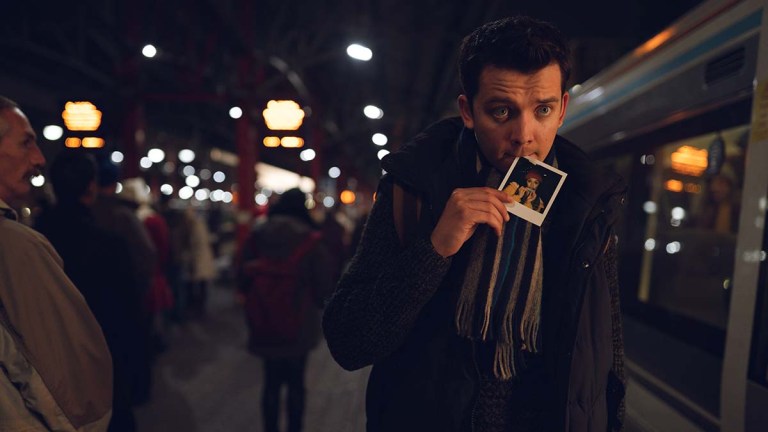The Problem With “Green Restaurants”
The first time I dined at the New York Grill in the Park Hyatt Tokyo (for a special occasion of course), I had what it’s most famous for: steak. A clean-cut waiter recommended the Grilled Yonezawa sirloin, and as I slowly cut, ate, and took in the 52nd-floor view, I realized the intrinsic irony of…

As much as I like to complain about New York – how it’s too expensive, how in most parts it’s been gentrified beyond recognition, how the subways seem to randomly switch to express routes without notice – it will always have at least one thing going for it: its restaurants. When you say you live in New York, one of the comments you hear most is, “Wow, you must eat some great food.” And although the statement has become as stale as late-evening Balthazar bread, it is nonetheless true. There are Chinatown hole-in-the-walls, Michelin-starred Midtown classics, overpriced Meatpacking haunts, polished West Village gems, grungy East Village dives, jazzy Harlem hotspots, trendy Williamsburg diners – really any type of food in any borough at any time of the day.
Yet, as the city has cleaned up its act, so too its restaurants have become more gentrified and “progressive.” New York has become a modernized mecca with Citi bikes and restaurant health grades, and the city’s food options have followed suit. Now restaurants seem more about locally sourced, organic soup du jours than service – less about a delicious steak than a rare variety of kale. Whole Foods now holds more cultural cachet than the 21 Club, and while it’s great to pull up a wooden chair at Roberta’s in Bushwick after waiting on a communal table for over two hours, sometimes one doesn’t actually care all that much about a restaurant’s “cool” factor or environmental footprint. Sometimes, all you want is to have a career waiter to treat you like a guest, to have your napkin folded upon returning from the bathroom, to have a menu of classic drinks void of “pomegranate martinis” or Manhattans wretchedly ruined with a “citrus twist.”
I suppose it’s a bit hypocritical to rail against this new breed of restaurant. After all, it’s my flannel-wearing, community-garden-volunteering generation that has done the bulk of the damage. The “classic” restaurant is a bit of an imagined ideal too. Let’s not forget that the classic culinary haunts we see on Mad Men and in our collective sepia-tinted memories are filled not just with starched white tablecloths and stellar service but also with cigar smoke and misogyny. Perhaps these hipster-ized restaurants will be what save the world. Perhaps the “classic” restaurants I’m so fond of are simply unsustainable and a product of post-war excess that has since fallen out of vogue.
“Sustainability” though has moved from an admirable ideal to a bit of a marketing ploy. At Jean-George’s Vongerichten’s ABC Kitchen, waiters sport biodegradable sneakers and the utensils are (rather inexplicably) made of potatoes. Some might say places like Le Bernardin, Per Se, 21 Club, Le Cirque, and La Grenouille epitomize culinary pretention, but honestly, what’s more pretentious than serial do-gooders trying to shame you into eating at a certain restaurant or ordering a certain dish? Sometimes the steak frites looks best. No need to deprive yourself. Man cannot survive on quinoa alone.
As Sadie Stein over at the T Magazine noted, old New York restaurants seem to be preserved in amber, unconsciously chugging along, creating the same classic food and providing the same wonderful, slightly self-serious atmosphere ever since. We dine out for the cuisine and for the time with friends, but why we really dine out is to be treated like guests. We can always throw a dinner party or whip up something for ourselves, but to go out to eat is to have the expectation that we’ll be treated with hospitality.
It seems like a very simple give-and-take: the customer pays money, and the people who are receiving said money serve you. Yet, from Bell Book and Candle (the country’s first “rooftop-to-table” restaurant) to Smörgås Chef (a “farm-to-table” restaurant with three New York locations), you’re treated as though you’re lucky to have even landed a reservation, cast out onto wooden tables and chilly outdoor terraces. The ethos reflects something more along the lines of the stereotypically snooty French waiter than than the kind of dining experiences that have made New York – and dining in the United States in general – such a pleasure. Somewhere along the line, “eco-conscious” pretention overtook the charm of fine dining.
The first time I dined at the New York Grill in the Park Hyatt Tokyo (for a special occasion of course), I had what it’s most famous for: steak. A clean-cut waiter recommended the Grilled Yonezawa sirloin, and as I slowly cut, ate, and took in the 52nd-floor view, I realized the intrinsic irony of the situation. The restaurant and its adjacent bar were featured in Sophia Coppola’s Lost in Translation, and while its dark hues, spectacular view, and jet-setting power players certainly seemed to be ripped from a film, it could’ve been a film set not in Tokyo, but in one of the classic Manhattan restaurants that made the mid-century New York dining scene so alluring. Perhaps I’ve entirely imagined the classic New York restaurant – The Russian Tea Room circa 1970, the 21 Club in the ‘50s, the Café Carlyle at any time – but even if I haven’t, well, surely it has fallen out of style, systematically replaced by healthier vegan and gluten-free options.
As I finished my drink and looked at my empty plate, not a bit of steak or potato left, I suddenly felt as though I were sitting in a museum, and while the Tokyo lights gleamed just as they do in New York, there was the indelible feeling of having been duped, of never being able to find a similar place in New York. At least not in this era. And likely, never again. ![]()




